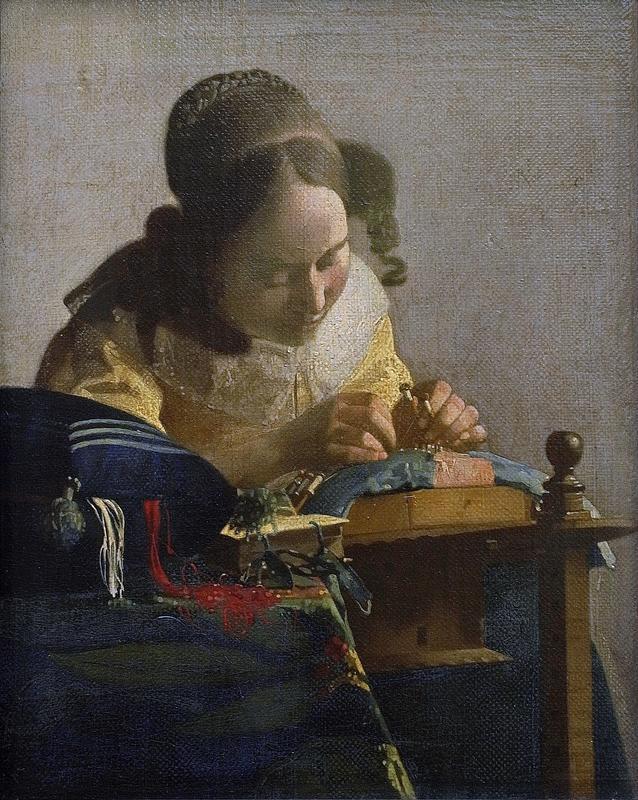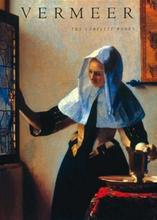More about The Lacemaker
- All
- Info
- Shop

Contributor
Johannes Vermeer loved the common people and perfected camera obscura techniques before it was cool.
Paintings by Vermeer, chief among them The Lacemaker, show a social motivation and caring focus that was way before its time. In the mid-1600s, when this painting was created, Vermeer’s home country of the Netherlands was experiencing a rush of wealth through trade which uplifted the middle classes to create a new elite mercantile class. For once, it was not just those with noble blood that could partake in the decadence of wealth and boy did they indulge themselves.
Vermeer, however, decided to show a different side of Dutch life in the 17th century. He only painted about 35 pieces, compared to the hundreds that other artists produced at the time, and they mostly consisted of domestic, ordinary scenes of working women. And while describing them as ‘ordinary’ scenes might suggest that they are dull, these paintings are anything but. Vermeer had the uncanny ability to take an action that is so commonplace in our minds, such as reading a letter or carrying a vase, and transform it into a scene that immediately grabs and holds our attention. He made every woman look like the heavenly Madonna (like Jesus’ mom, not the singer; although, she’s quite regal too). He had mastered optical effects that were revolutionary such as blurring the foreground and background to suggest a depth of field. Using these effects and his knowledge of lighting, he was able to make his subjects appear so lifelike that it almost feels like you are intruding on the scene. Sorry to interrupt your sewing, lady.
Vermeer remained relatively unknown during his life and it wasn’t until the French avant-garde movement of the 19th century that his work was rediscovered and grew immensely in fame. The man credited with the rediscovery of Vermeer was French salon critic and co-founder of L’Alliance des arts in Paris, Thoré-Burger. He praised the Dutch for their use of naturalism, and their focus on the simplicity of life and basic virtues like diligence and humility. Burger referred to such art as ‘L’art pour l’homme,’ or the art of the people. The members of the avant-garde believed that art should accommodate the needs of the common people not just the wealthy. It is no wonder that they became so fascinated by Vermeer’s work which so gracefully portrayed the dignity and beauty of hard work and everyday people. It took nearly two hundred years but Vermeer’s paintings were finally found by like-minded people that appreciated the subject of his work.
Sources
- https://www.ibiblio.org/wm/paint/auth/vermeer/lacemaker.html
- https://www.telegraph.co.uk/culture/art/art-reviews/8913911/Vermeers-Wo…
- https://www.cam.ac.uk/research/news/vermeer%E2%80%99s-women-secrets-and…
- https://www.britannica.com/biography/Johannes-Vermeer
- https://www.metmuseum.org/toah/hd/verm/hd_verm.htm
- https://www.theguardian.com/artanddesign/jonathanjonesblog/2017/feb/08/…
- http://www.essentialvermeer.com/thore.html
- https://www.metmuseum.org/art/collection/search/461684
- https://www.tate.org.uk/art/art-terms/a/avant-garde
- https://www.khanacademy.org/humanities/becoming-modern/intro-becoming-m…
Featured Content
Here is what Wikipedia says about The Lacemaker (Vermeer)
The Lacemaker is a painting by the Dutch artist Johannes Vermeer (1632–1675), completed around 1669–1670 and held in the Louvre, Paris. The work shows a young woman wearing a yellow bodice, holding up a pair of bobbins in her left hand as she carefully places a pin in the pillow on which she is making her bobbin lace.
Check out the full Wikipedia article about The Lacemaker (Vermeer)













